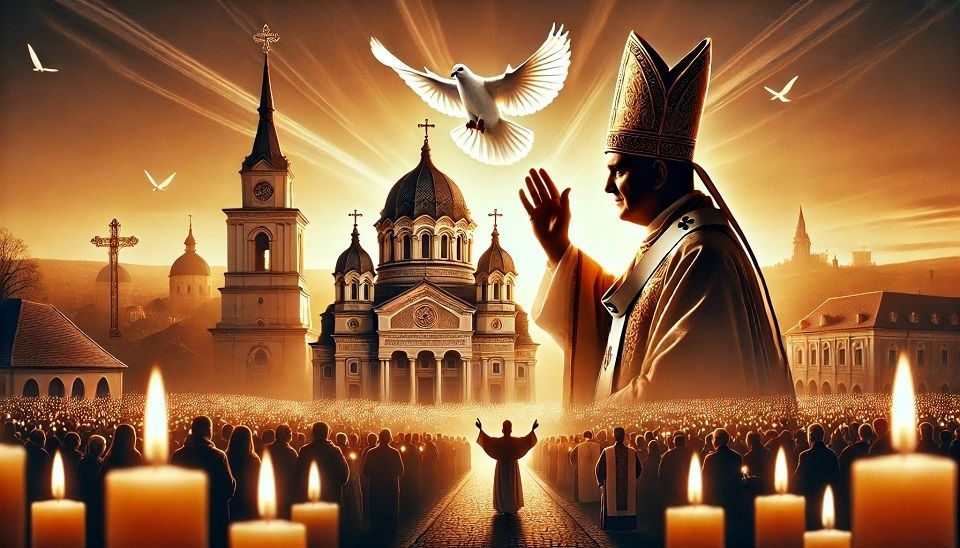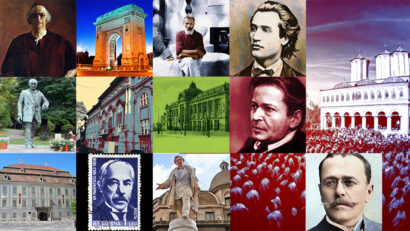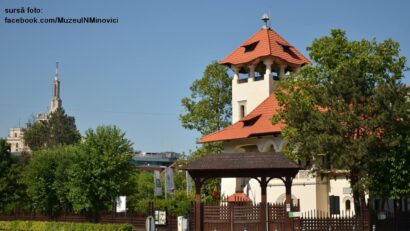Papal visits to Romania
The recent death of Pope Francis and the context of transition and reflection within the Catholic Church bring back to public attention the significant moments in which Romania was at the center of the Vatican's attention.

Eugen Cojocariu and Ion Puican, 26.04.2025, 14:00
In 2025, Orthodox Easter and Catholic Easter were celebrated on the same day, April 20. At the same time, the recent death of Pope Francis and the context of transition and reflection within the Catholic Church bring back to public attention the significant moments in which Romania was at the center of the Vatican’s attention. The visits of Saint Pope John Paul II in 1999 and Pope Francis in 2019 were not only religious events, but also historical landmarks for ecumenical dialogue, for the reconstruction of collective memory and for the reaffirmation of common values between the Catholic and Orthodox Churches. In a Europe currently marked by fragmentation and uncertainties, these moments of openness and solidarity take on a special relevance, being examples of reconciliation and cooperation in a deeply human and Christian spirit.
Between 7 and 9 May 1999, Pope John Paul II made a historic visit to Romania, becoming the first Pope to set foot in a predominantly Orthodox country since the Great Schism of 1054. This visit was a symbol of reconciliation and dialogue between the two great branches of Christianity. During his stay in Bucharest, Pope John Paul II was warmly received by the Romanian authorities and by Patriarch Teoctist of the Romanian Orthodox Church. A special moment was the joint participation in religious services, where the Pope attended an Orthodox mass, marking an unprecedented gesture in the history of interfaith relations.
Two decades later, between 31 May and 2 June 2019, the late Pope Francis visited Romania under the motto “Let us walk together!”. This visit had a pastoral and ecumenical character, highlighting the Pontiff’s commitment to unity and solidarity. During the visit, Pope Francis had official meetings with Romanian dignitaries, and also celebrated religious services in several locations in the country: in Bucharest, he celebrated the Holy Mass in the Cathedral of Saint Joseph; in Şumuleu Ciuc (center), he led a service dedicated to the Hungarian community, attracting tens of thousands of pilgrims; in Iași (northeast) and in Blaj (center), on Câmpia Libertății, where he celebrated the beatification ceremony of seven martyred Greek Catholic bishops, victims of the communist regime, thus recognizing their suffering and faith. This visit was appreciated for its messages of unity, peace and encouragement of interreligious dialogue, strengthening relations between the Catholic and Orthodox Churches in Romania.
The Romanian Ambassador to the Holy See and the Sovereign Military Order of Malta, George Bologan, told us about papal visits and Romania’s relations with the Holy See: “This year we mark 35 years since the resumption of diplomatic relations, as democratic Romania and the Holy See decided in 1990. During this journey, we had the privilege of experiencing historical moments, such as the visit of Pope John Paul II to Romania, the first visit of a Sovereign Pontiff to a mostly Orthodox country but also the apostolic visit to our country of Pope Francis. When we talk about the Holy See, we can say that we are looking at history in the face. We remember the correspondence of the Sovereign Pontiffs with the princes of the Romanian Countries, which dates back to the beginning of the 14th century, but also the concrete steps that interwar Romania took to establish diplomatic relations in the modern sense, on June 1, 1920, when Romania needed partners and friends for its recognition as a young state on an international level. Ecumenism, although it seems like a technical matter that is poorly understood by the general public, could actually have many concrete consequences in society. The state encourages ecumenism to ensure a balance between all segments of society. Ecumenism also urges and even obliges us, whether we like it or not, to minimal forms of politeness and respect that are necessary in everyday life at work, in our relations with neighbors, etc. On the other hand, dialogue is important in order not to devalue Christianity. Interfaith dialogue is also an exercise in tolerating each other and learning from each other. The two pontifical visits in 1999 and 2019 refreshed the air that Romanian society breathes. They made the Christian joy that we can be united in diversity be felt on the streets of Bucharest and beyond.”
These papal visits remain symbolic landmarks not only in the recent history of diplomatic relations between Romania and the Holy See, but also in efforts to bring about interfaith rapprochement. They represent evidence of a common will for reconciliation, openness and unity, which transcends dogmatic barriers and is anchored in universal values: peace, mutual respect and solidarity. The presence of the two Popes in Romania has always been received with emotion and enthusiasm, reflecting the deep desire of Romanian society to be an active part of a global spiritual and cultural dialogue. In a context marked by rapid changes, ideological fragmentation and identity challenges, the lessons of these historical moments remain relevant. They remind us that authentic dialogue and respect between faiths are not just symbolic gestures, but concrete steps towards a more empathetic and united world. And Romania, through these significant episodes, affirmed its role as a bridge between traditions, cultures and spiritualities, actively contributing to shaping a more united Europe and more aware of its roots. (EE)





























